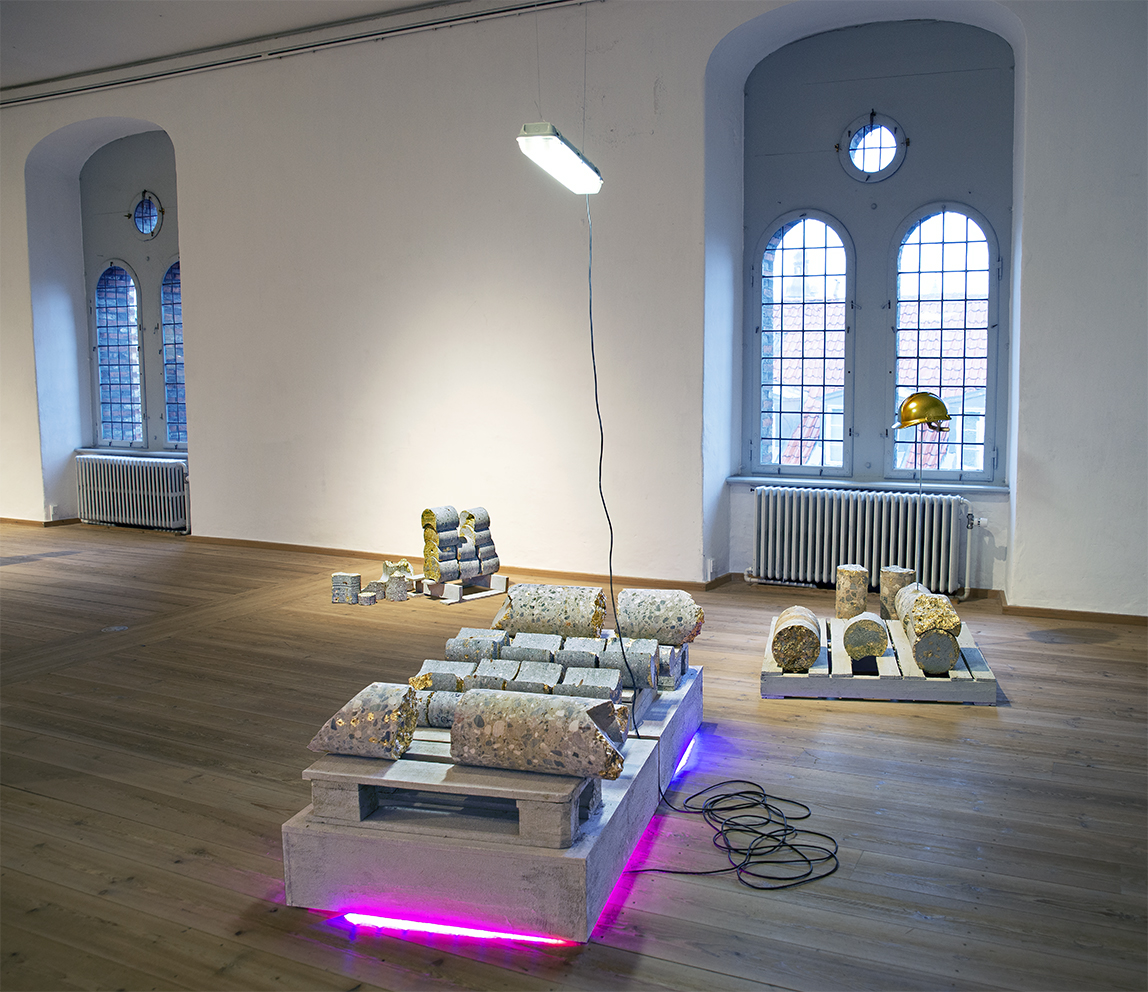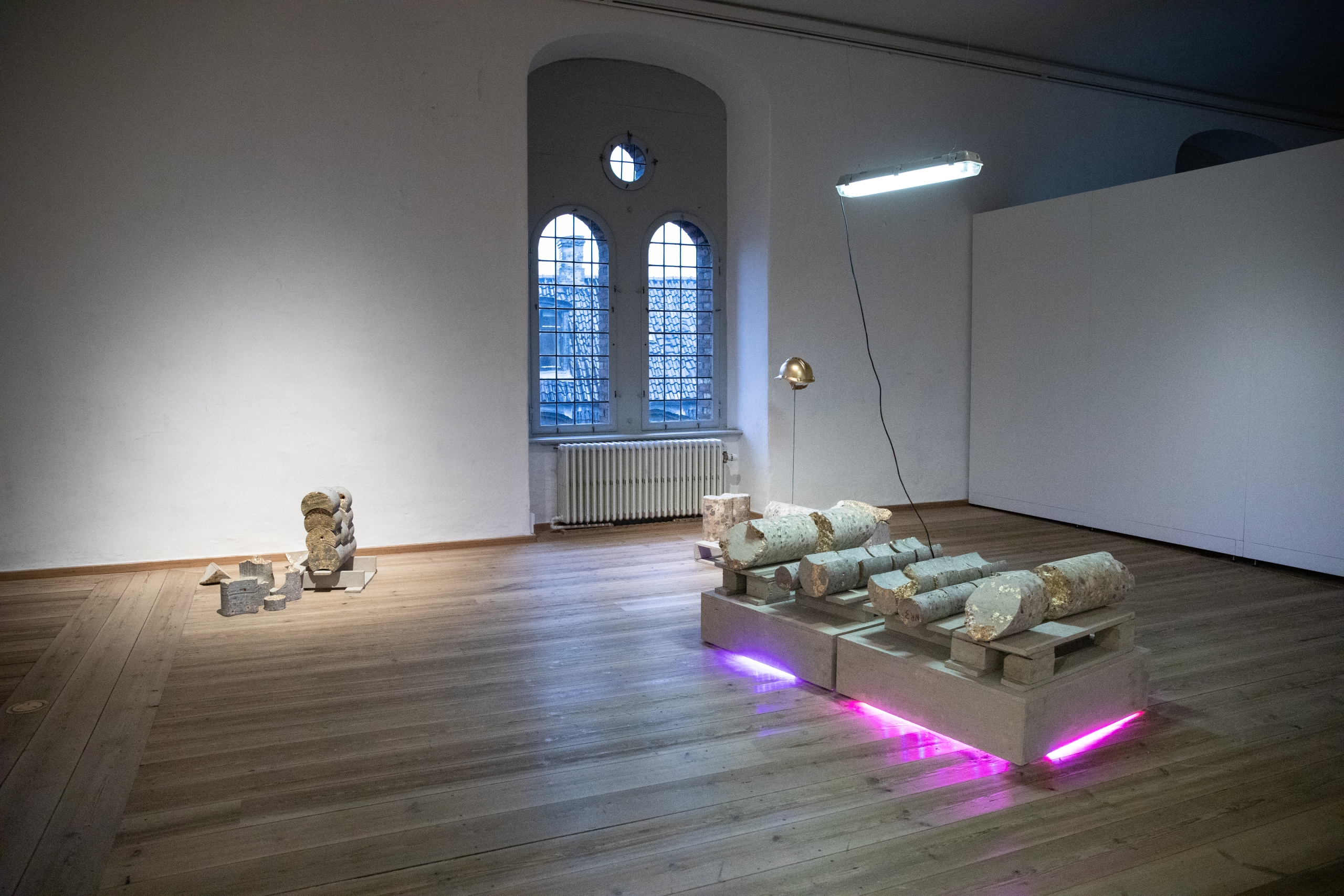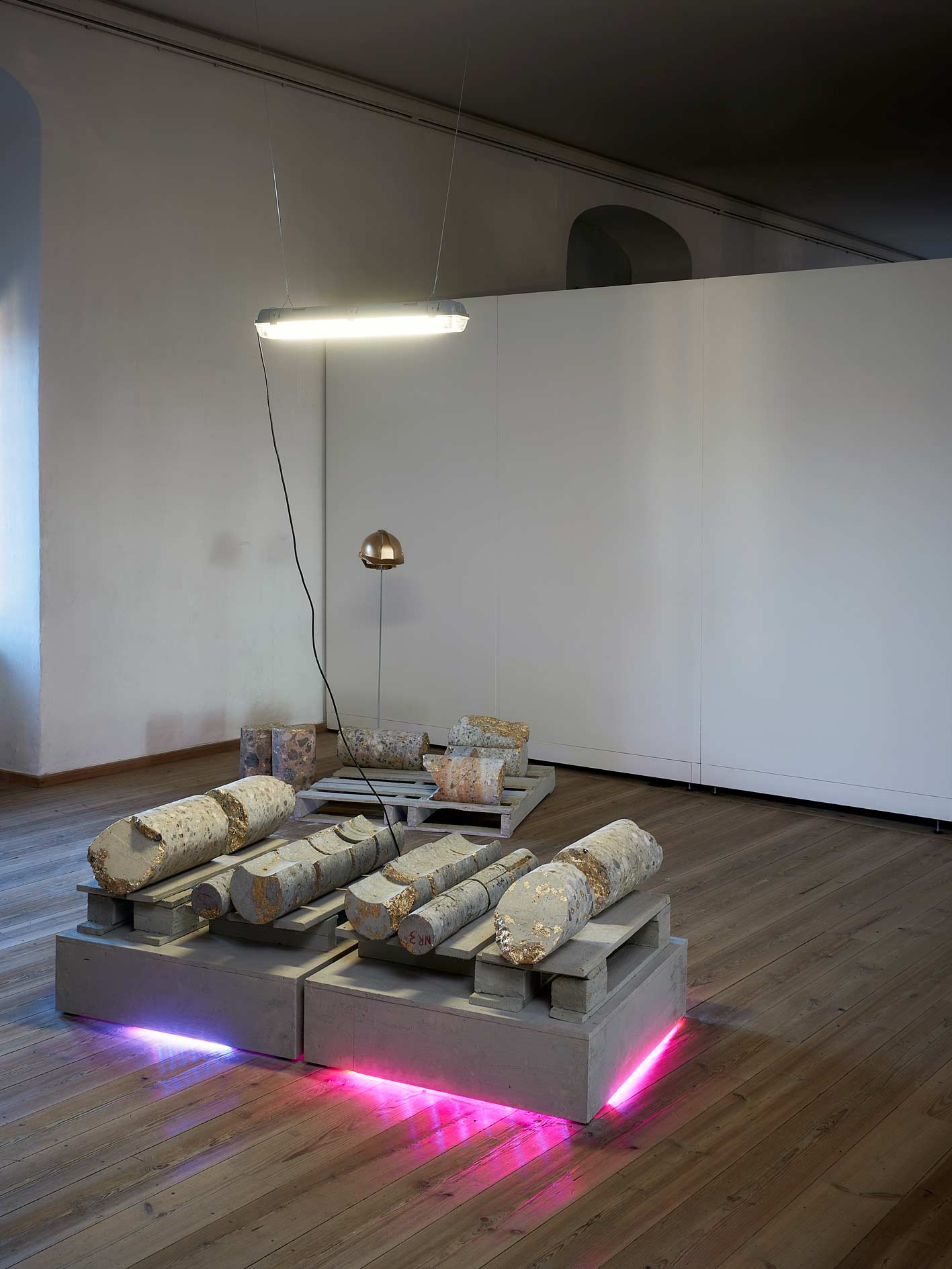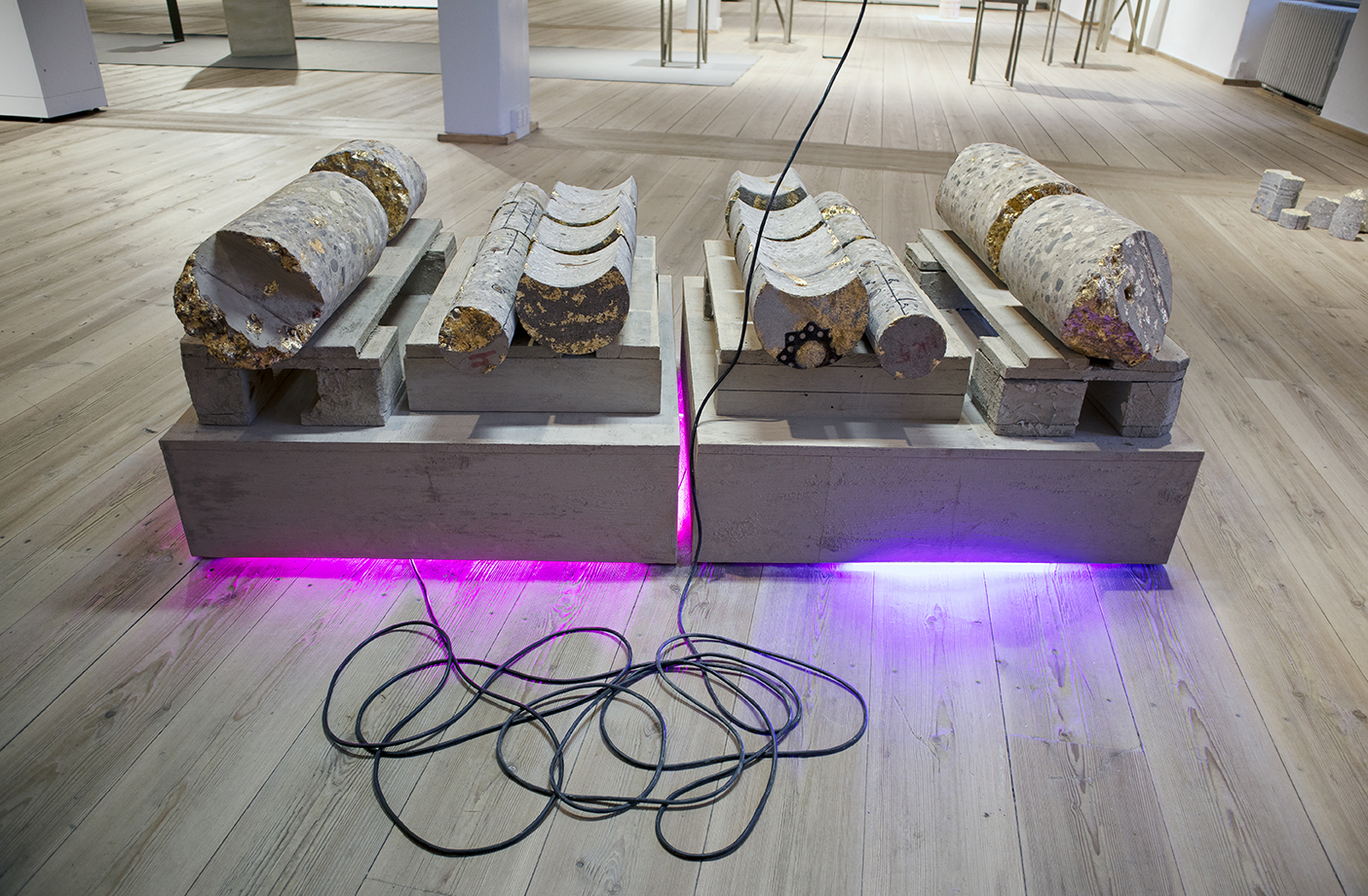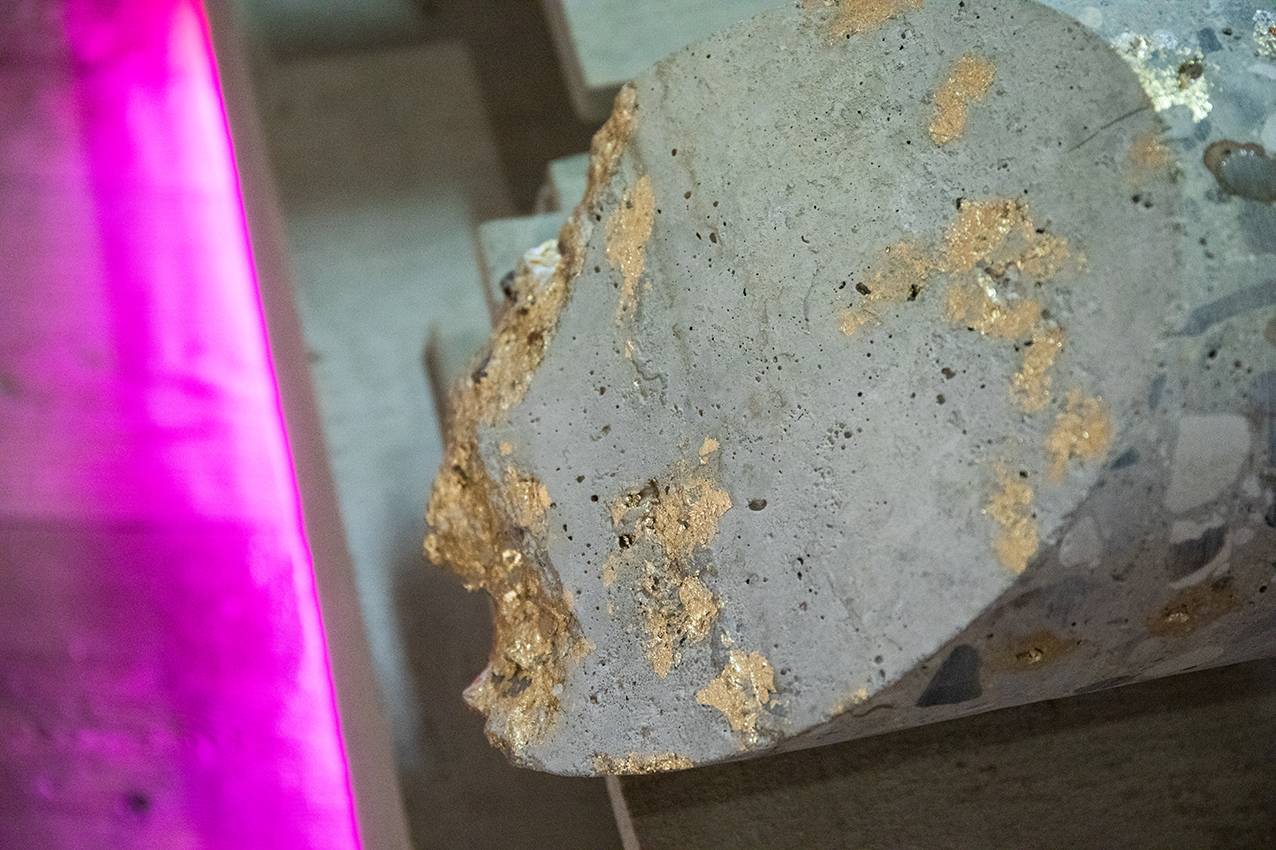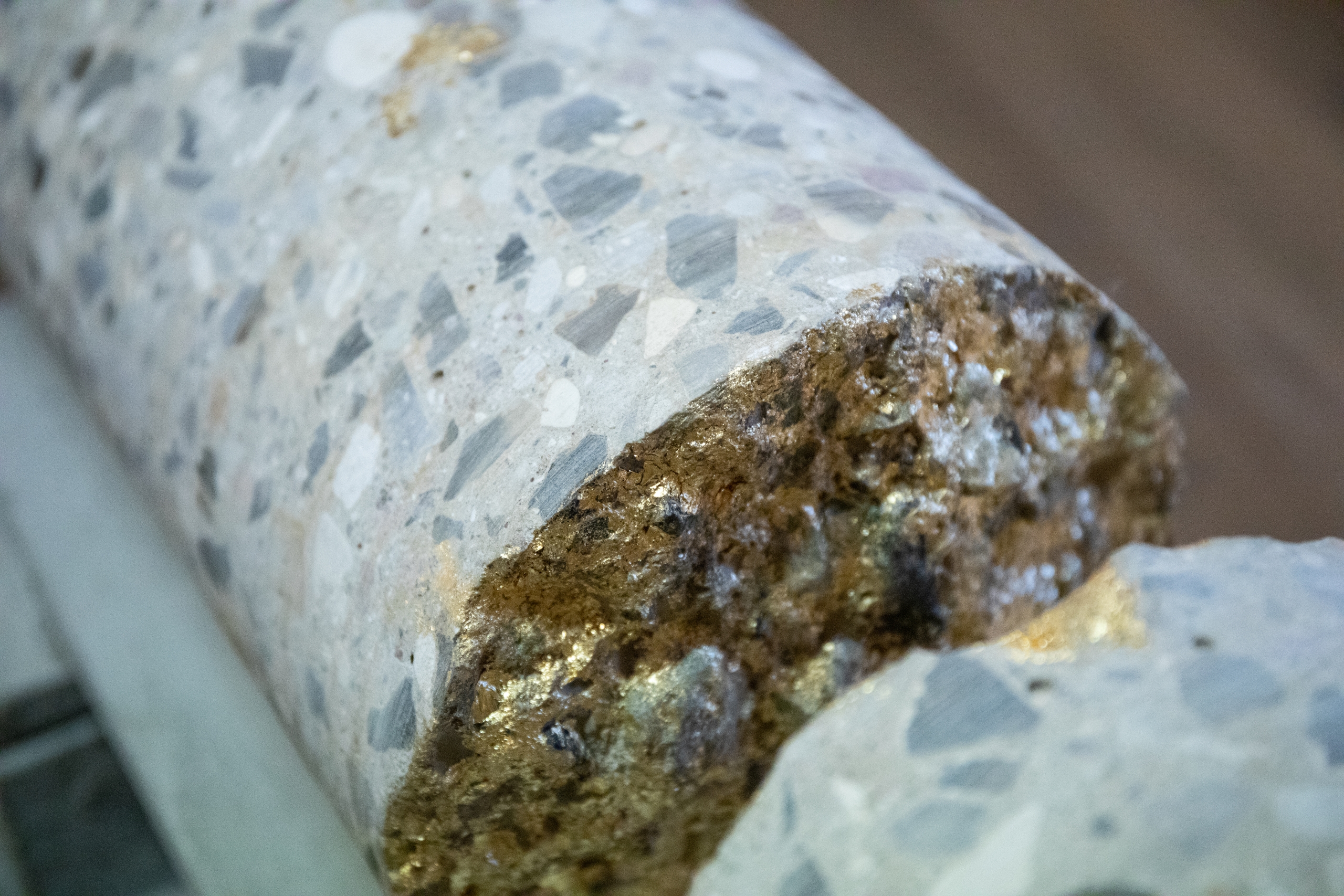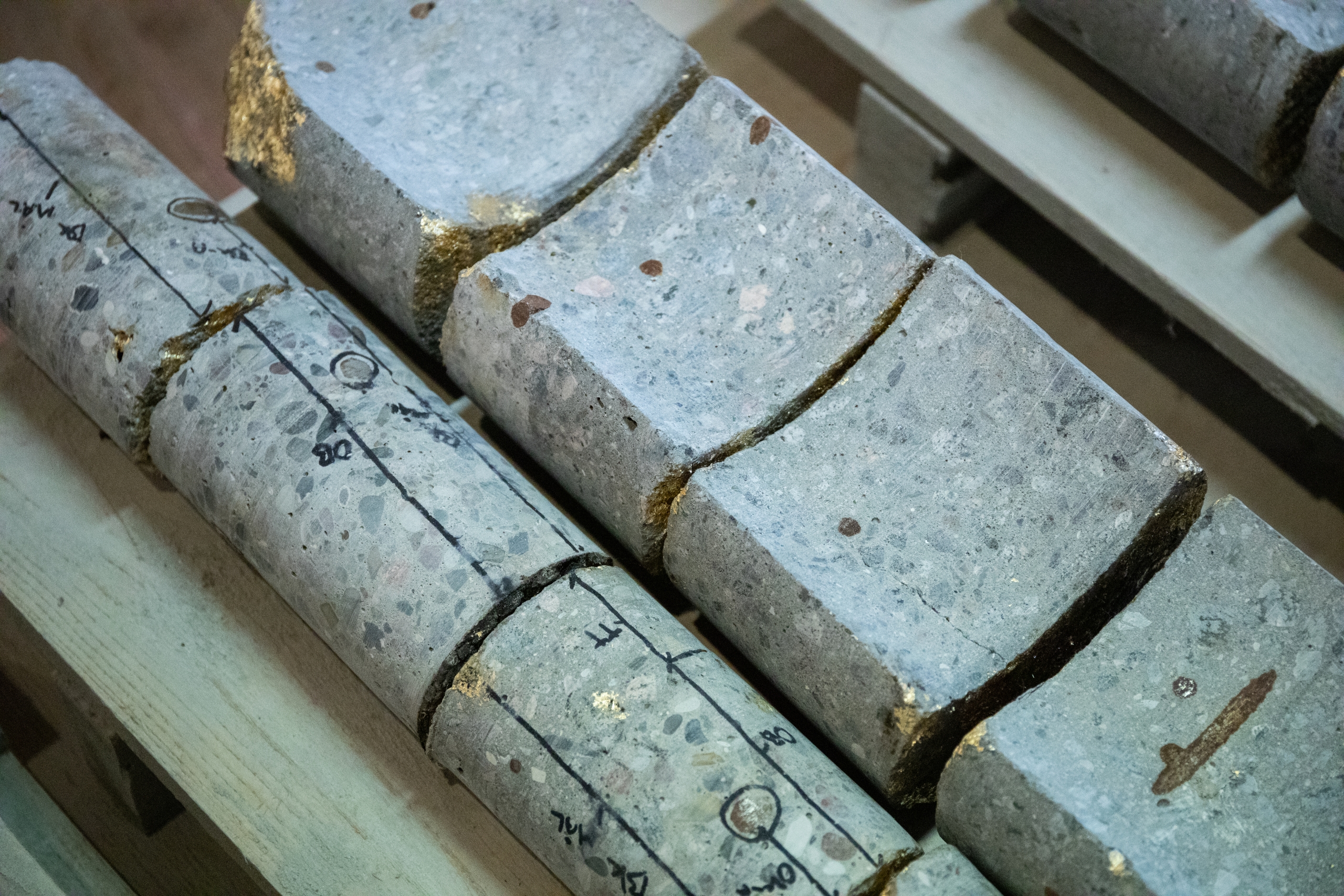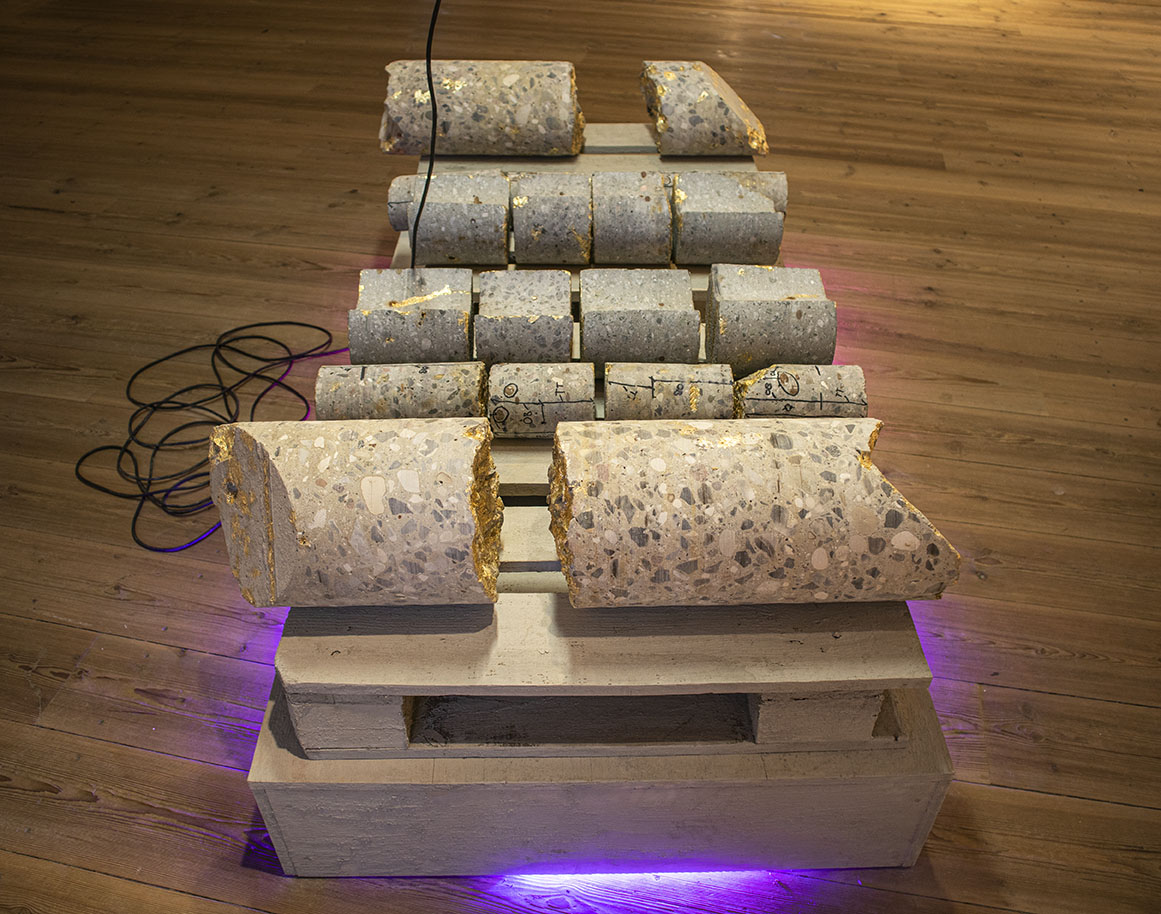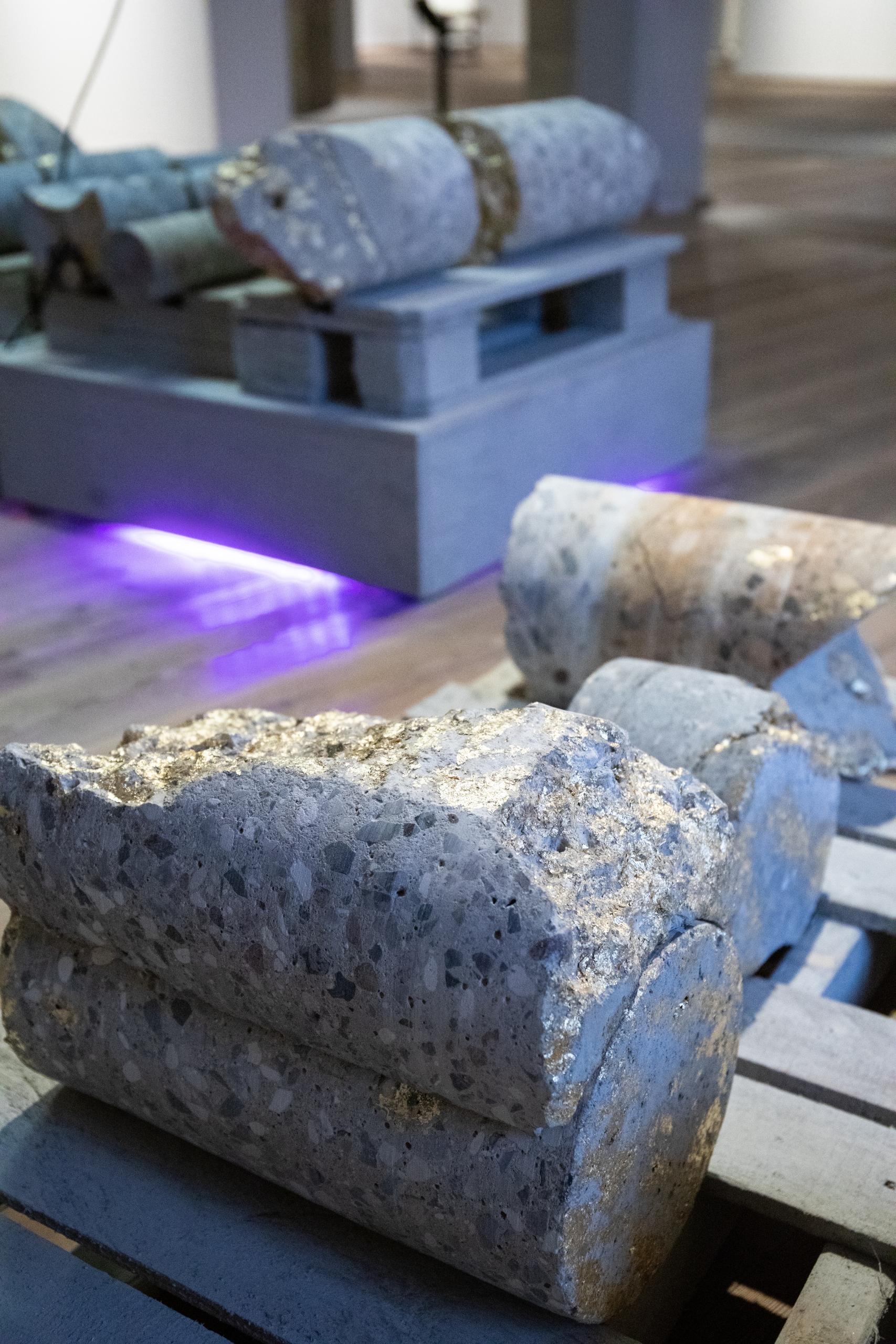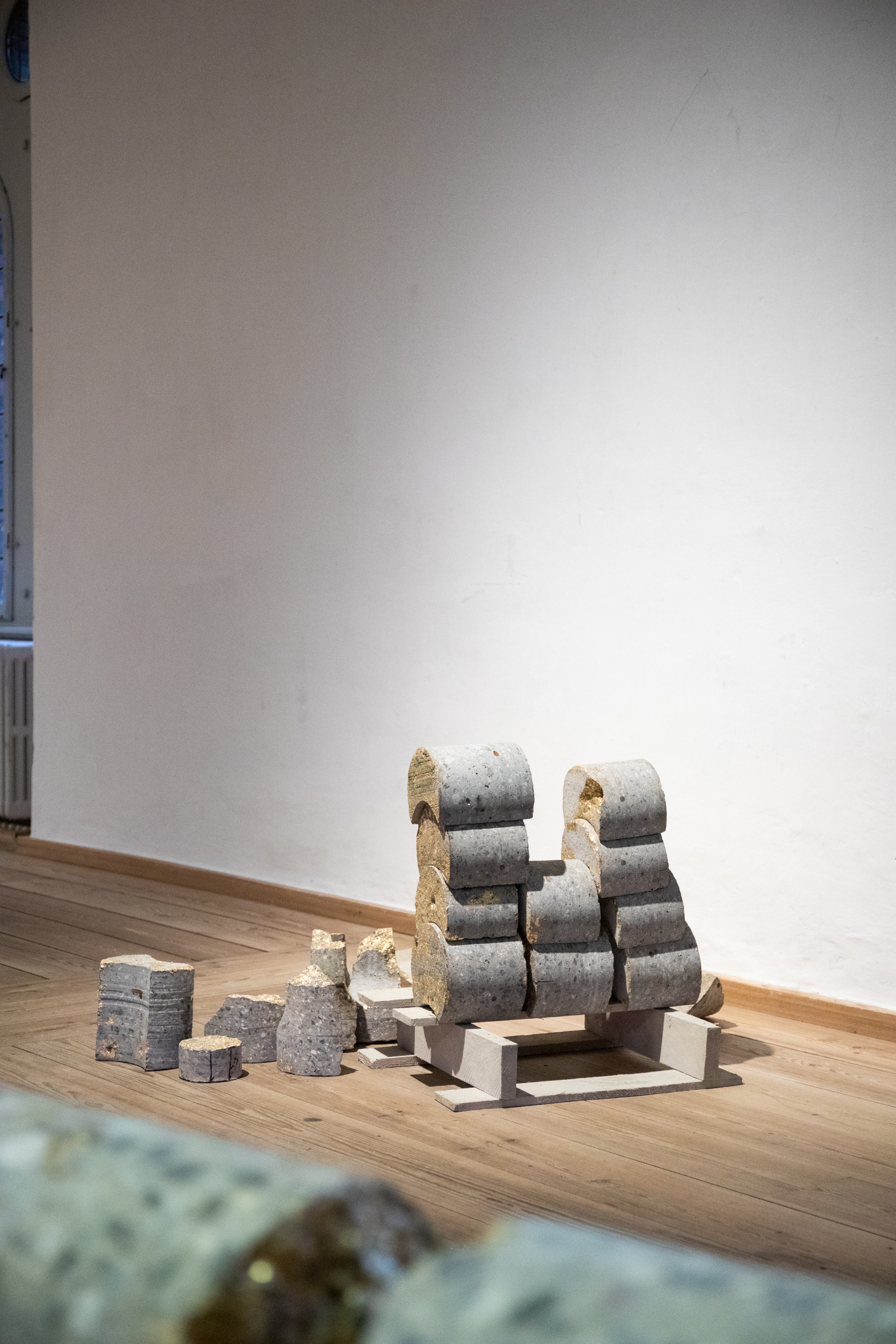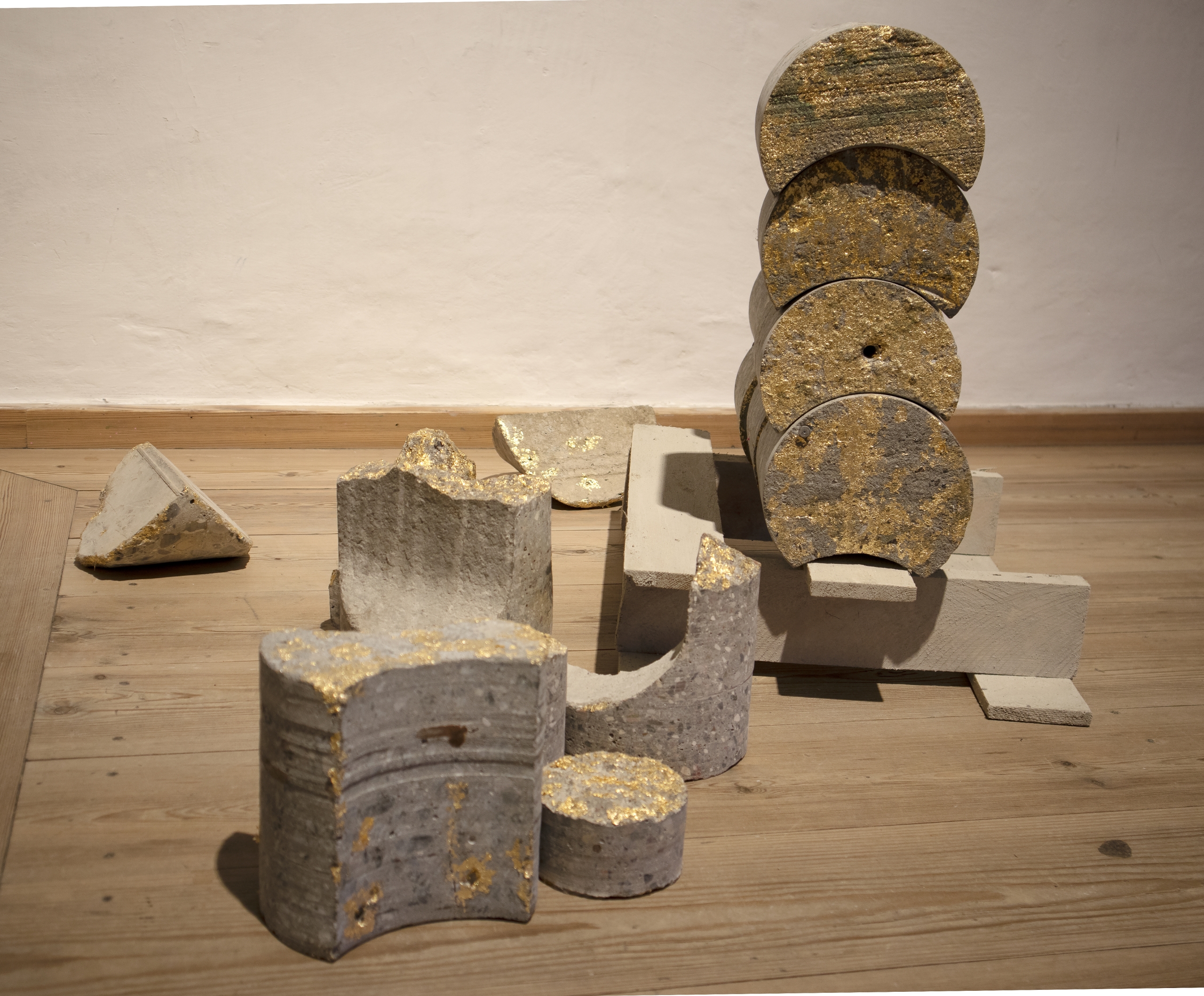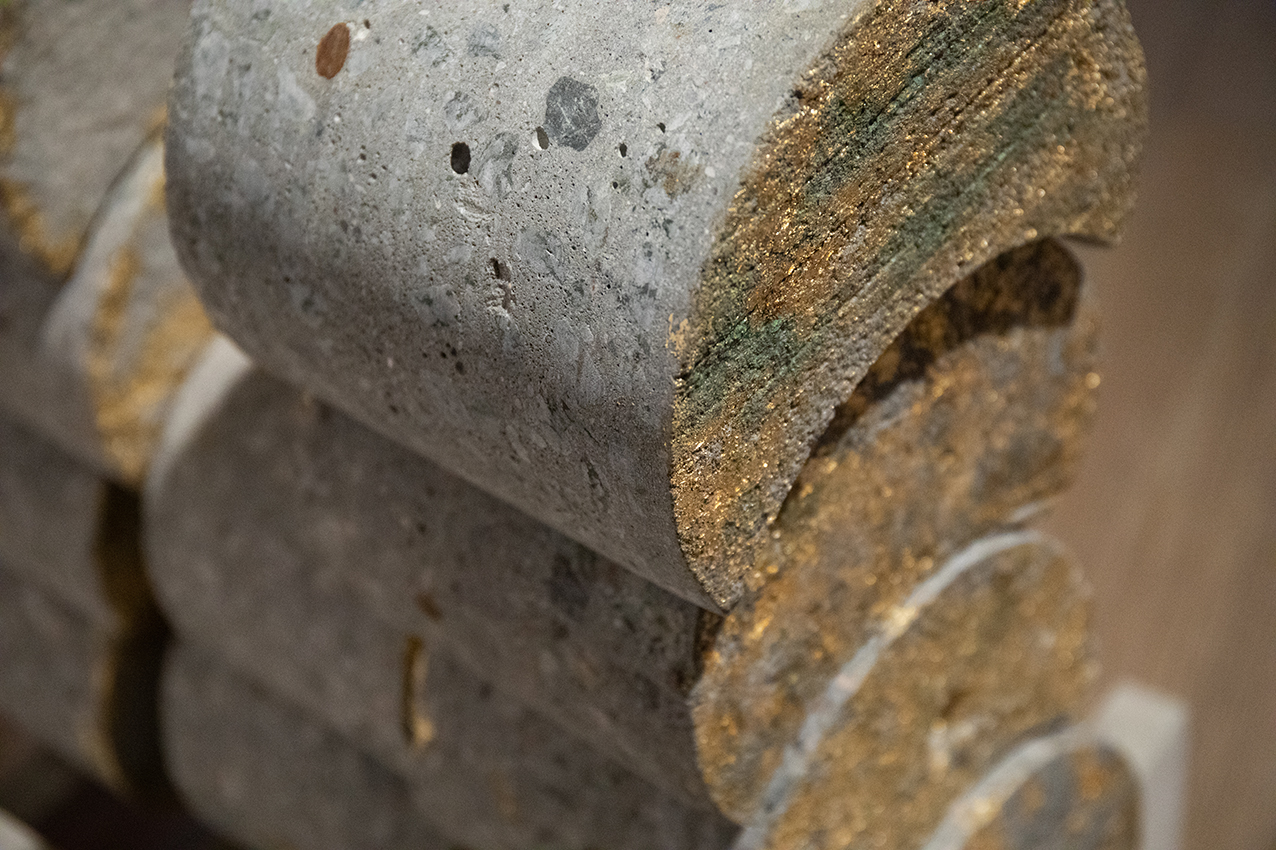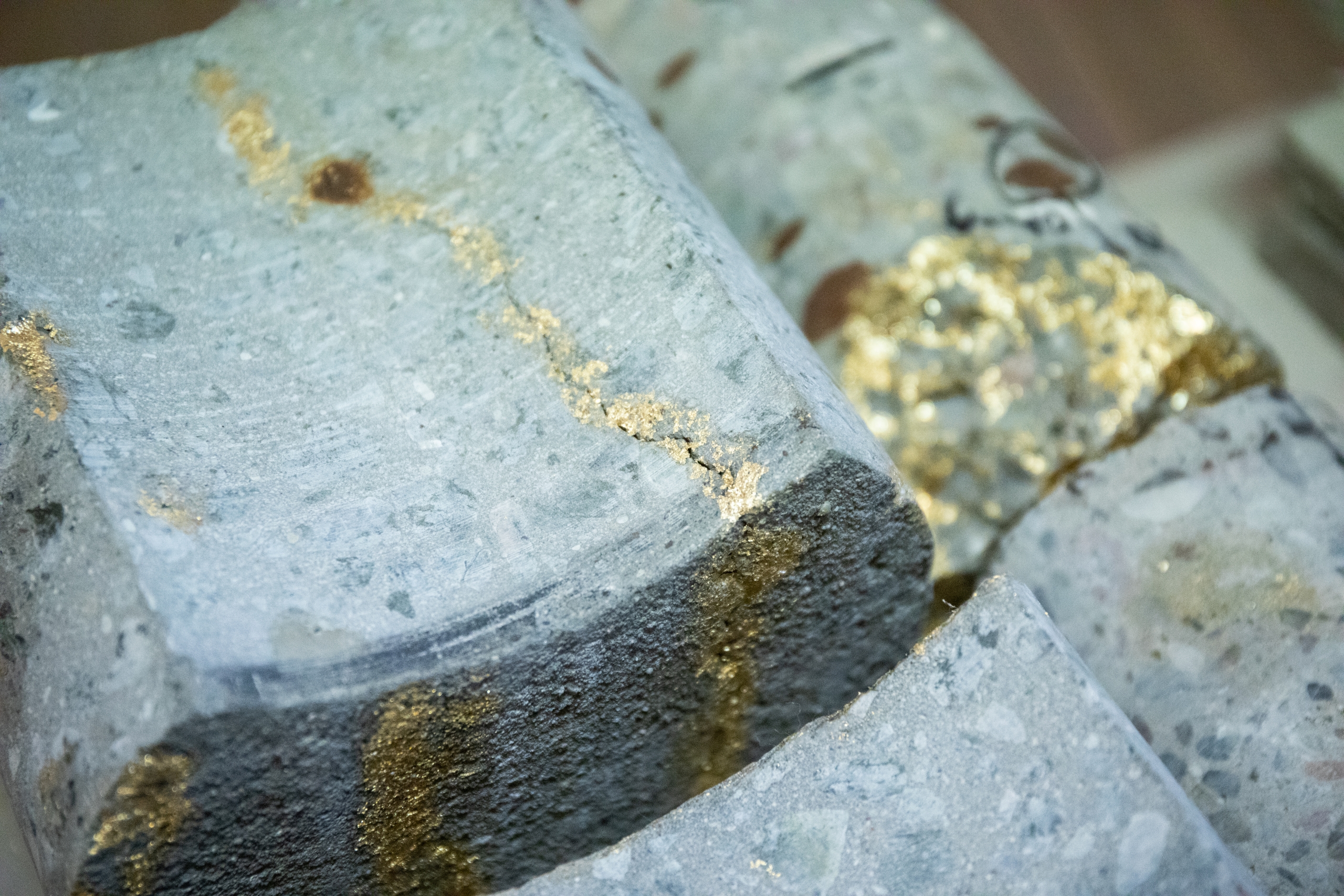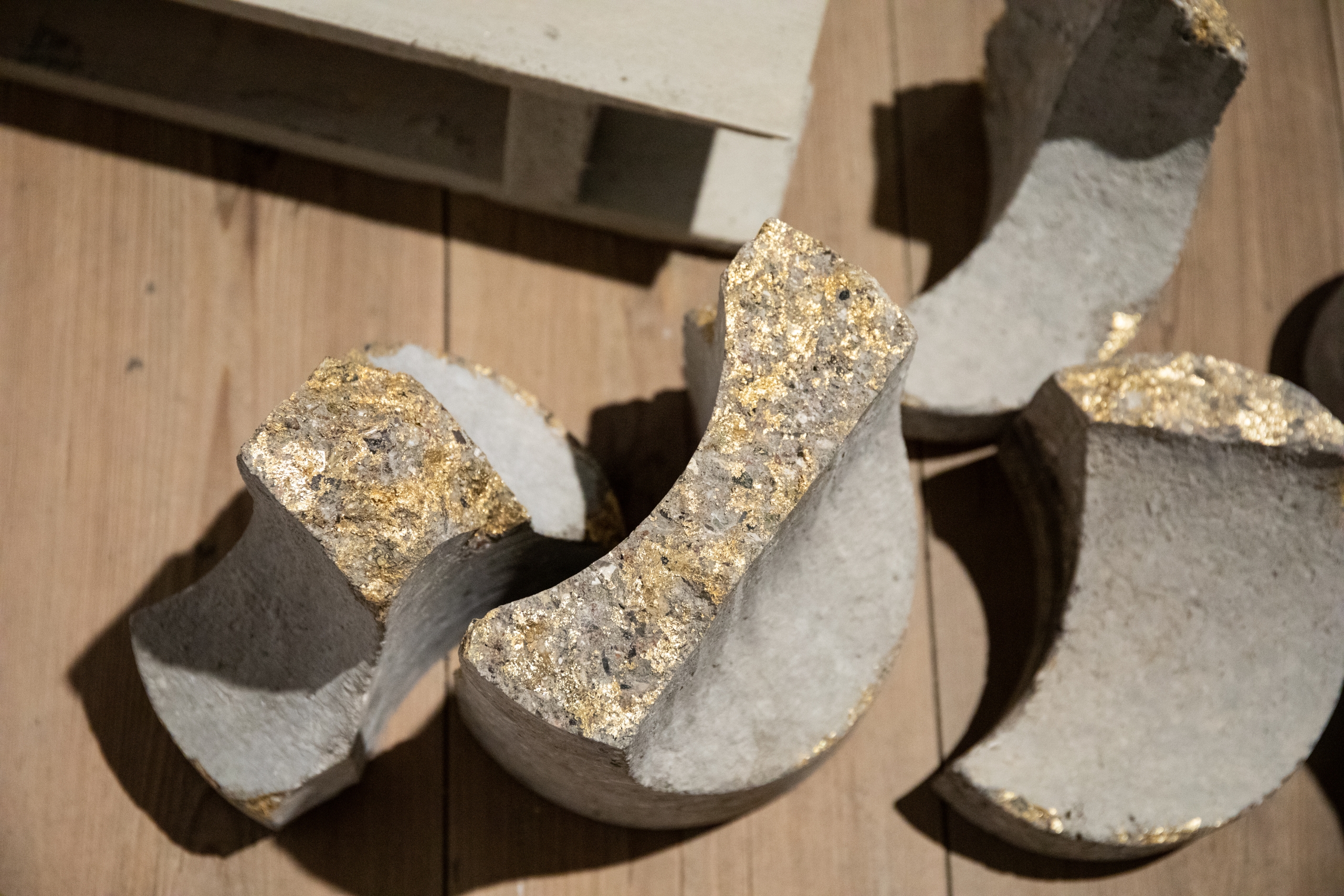GOLDDIGGER, THE LAND IS YOURS.
UDSTILLING MAXI RELOAD IN UNKNOWN DEPTH, RUNDETÅRN, 2021
CONCRETE , EUROPALLETS, GOLD LEAVES, SAFETY HELMET, 2021.
50HX160LX80B cm, 120HX80Lx80B.
Concrete objects stacked on top of or next to each other on Euro pallets. Placed in a display as gold artefacts and symbolising ancient columns and antiquity, they stand out as prominent and important objects.
A borehole is a narrow, deep shaft that is drilled either vertically or horizontally. In the industry, these holes are drilled with a diamond drill, which almost gnaws into the foundation and leaves a rounded object. These objects and remains from boreholes can be found in construction and industrial areas and are considered demolition waste from destruction. They are often found in the gap between the demolition of old buildings and the construction of new buildings.
To Hymøller, they are objects of value that remind her of times in transition and change, from old to new beginnings, reminiscent of fragments that together form columns from antiquity.
The object is also a symbol of property control and rights over property and land. Likewise, they are evidence of the significant change that the world is undergoing, constantly renewing itself in relation to contemporary cohesion.
She relates her quest and what she finds and collects on construction sites to that of an urban archaeologist who discovers, collects, and analyses the history of cities through direct evidence, materials, and remains from the past.
MAXI RELOAD IN UNKNOWN DEPTH
The exhibition “Maxi Reload in Unknown Depth” is about the love-hate relationship to the age we are living in and the unknown world we are entering. The artists Clara Black Starck and Kristine Hymøller occupy the Round Tower’s Library Hall with sculptures and objects that reflect their ambivalent relationship to innovation, architecture, machines, and technology.
The works of Clara Black Starck and Kristine Hymøller examine the urban infrastructure in a broad sense as a connection and a communication between points of the city, buildings, and people. The works are juxtaposed in order to create a dialogue between the artists’ individual and common interpretation of the persistent acceleration of the Third and Fourth Industrial Ages with the Library Hall as the setting for a narrative about the development of our society.

